It’s those heritage clones: 2A/ Wädenswil, Calera, Pommard, Martini, Mount Eden, and Swan that fascinate true Pinot lovers, as they have rich stories to tell.
By Laura Ness
Pinot Noir in the mainstream market is made mainly from Dijon Clones 114, 115, 667 and 777, with the occasional 113, 943 and 828 thrown in for good measure. They’re widely planted because they ripen fairly consistently, even in coastal climes, set pretty well, are disease-resistant and deliver gobs of fruit.

Originating from France, the “Dijons” were developed to replace diseased vines there, but immediately found takers in Oregon. They really came into vogue after the advent of “Pinot mania,” thanks to a guy named Miles (in a movie called Sideways). These clones du jour rapidly outpaced and, in many cases, displaced the old “heritage” clones of the past.
Fortunately, some winemakers love diversity, even when it goes hand-in-hand with adversity — and really, when does it not?
First discovery, first steps
It’s those heritage clones: 2A/ Wädenswil, Calera, Pommard, Martini, Mount Eden, and Swan that fascinate true Pinot lovers, as they have rich stories to tell. Like the Dijon clones, they’ve all been heat-treated for disease removal and certified by Foundation Plant Services at UC Davis.
There are also selections that haven’t been thus certified, including David Bruce, Chalone, Coury, Pisoni, Rochioli and Wente. Unlike the numbered clones, these are named for people and places, adding to their lore.

Scattered from the furnace-like Chalone AVA in California’s Gabilan Mountains to the unlikely banks of the Eel River in the state’s Humboldt County, we tracked down some of the winemakers who covet these “oddballs.” These artists make the kind of Pinot Noir that makes you set your glass down in amazement before you’ve even tasted it.
When the aromas defy description and have you searching for a thesaurus, you know you’ve hit the jackpot.
This is precisely what happened when I sniffed the 2018 Furthermore Starbridge Vineyard Pinot Noir, made from the Summa clone. This wine started me on a journey to learn more about these oddball clones.
Summa vibes
According to Rusty Gaffney of PinotFile, Burt Williams of Williams-Selyem, who made Pinot Noir from the Summa Vineyard from 1988 until 1997 (including the first California Pinot Noir to sell for $100 per bottle in 1991), believes the Summa clone is derived from the Swan clone. Williams feels this clone, grown at that Western Sonoma County site (from which Starbridge was later derived), made some of the very best Williams-Selyem Pinot Noirs.
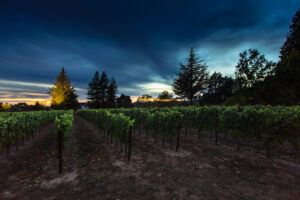
Thomas Rivers Brown of Rivers Marie Vineyards in Calistoga, Calif., who’s owned Summa Vineyard since 2010, admits he’s run out of things to say about the wines from this clone. With its nose-tingling aromas of windswept coastal hillside, exotic spices, otherworldly perfume and racy red fruits, the 2018 Furthermore wine scored 98 points at the 2022 Sunset Wine Competition.
Pisoni, Coury Pommard and Calera
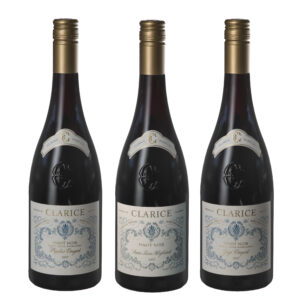
Winemaker Adam Lee prizes the Pisoni selection, which was brought to the United States by the erascible Gary Pisoni, allegedly smuggled through customs in his underwear. Lee sources it from both Garys’ Vineyard and Rosella’s Vineyard (both in California’s Santa Lucia Highlands AVA) for his Clarice Wine Company offerings. He gets the same clone from the nearby Soberanes Vineyard for his Beau Marchais Wines. He says, “[Pisoni fruit] produces very dark, rich, concentrated wines — which is a bit surprising, given that the cluster itself is fairly big and the berries decently sized.”

He also favors the Coury Selection Pommard, which he worked with in Oregon for many years. (Before the arrival of Dijons, Pommard and Wadenswil were the original Pinot clones planted in Oregon.) “Coury Pommard clusters were smaller and it ripened pretty late, although that might also have been because I worked with own-rooted vines,” says Lee.
Bill Brosseau of Testarossa Winery in Los Gatos, Calif., also makes ample use of the Pisoni clone planted at all of the vineyards in the Gary Franscioni and Pisoni portfolio. He also gets Calera fruit from Doctor’s Vineyard to make the most popular of all the Pinot Noirs Testarossa produces. “Calera at Doctor’s is a very low-yielding clone, due to a high degree of shatter,” he says. But the resulting wine offers “very concentrated aromas as well as palate intensity, with notes of sage and dark fruit profiles.”
The Calera clone came from Josh Jensen’s Vineyard in San Benito County (Calif.). Rumor has it Jensen suitcased it in from Domaine de la Romanée-Conti vineyards in Burgundy. From the Sanford & Benedict vineyard, Brousseau sources the Archery Summit 1 clone, which he says might actually be 828 Dijon because of its very upright growth pattern. “Medium to semi- large berry size, with very juicy flavors and silky tannins, and dark fruits such as boysenberry and blackberry,” he describes.
122 Vosne-Romanée, 123 and Jardini
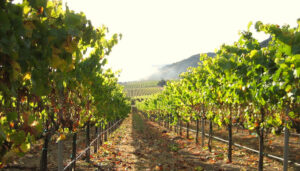
At Fogstone Vineyard, another monopole for Testarossa, Brosseau planted the 122 Vosne-Romanée clone, 123 and Jardini. “122 Vosne-Romanée is a new clonal selection,” he says. “Normal growth habit and average fruit set, perhaps slightly smaller cluster size than most clones. It offers red fruit profile and earth tones, with moderate intensity in the palate.”

He adds 123 is very similar to UC Davis clone 23 (in fact, it’s a cleaned up version of 23, which originated in Switzerland and became known as the Mariafeld clone). This fruit offers “very long clusters and chewy tannins. It seems reminiscent of Syrah-cluster morphology: dark color and dark flavors along with floral notes. I find it very unique and different from most clones.”
Asked about the Jardini selection, Brosseau says, “Supposedly, this is a suitcase selection from a grower in Monterey County. It has good tannin structure and intensity, similar to the Pommard clone: red fruit profile and normal cluster morphology and growth habit.”
Lester Vineyard in Corralitos is also growing the 122 Vosne-Romanée clone. Winemaker John Benedetti notes, ”It gets really lignified at low sugars, which is great for wines with stem inclusion.” He plans to make a special blend this year, with this and 2A. They’ll call it “Francisco,” in honor of his friend, the late Frank Cates, who was GM at Cinnabar Winery and helped establish Lester Family wines.
Mount Eden, Merry Edwards and more
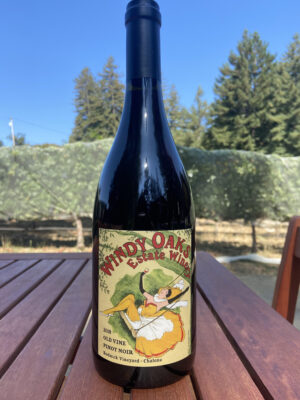 The Mount Eden clone is one of the oldest in California, brought from Burgundy to Saratoga by Paul Masson, who established what is today called The Mountain Winery. Melville Winery in Santa Rita Hills relies on heritage clones, including Mount Eden, for its deep, dark bass notes and ability to stand on its own. (Sidenote: Merry Edwards, who worked at Mount Eden Vineyards for three vintages, had some cuttings heat-treated at UC Davis in 1975 that became Clone 37, the “Merry Edwards” clone.) Melville has that, plus Jackson and Swan, which help lend Melville Pinot Noirs incredible depth, yet supple grace.
The Mount Eden clone is one of the oldest in California, brought from Burgundy to Saratoga by Paul Masson, who established what is today called The Mountain Winery. Melville Winery in Santa Rita Hills relies on heritage clones, including Mount Eden, for its deep, dark bass notes and ability to stand on its own. (Sidenote: Merry Edwards, who worked at Mount Eden Vineyards for three vintages, had some cuttings heat-treated at UC Davis in 1975 that became Clone 37, the “Merry Edwards” clone.) Melville has that, plus Jackson and Swan, which help lend Melville Pinot Noirs incredible depth, yet supple grace.
Jim Schultze of Windy Oaks in Corralitos knows he’s making liquid history when he crushes Chalone clone Pinot Noir from the Rodnick Vineyard, which is part of the original vineyard that Dick Graff planted at Chalone. With its extreme daytime heat, you wouldn’t think the area a match for Pinot Noir. But, Schultze says, “It’s very cold at night, and the Pinot seems to respond to this. The resulting wines are highly aromatic, often showing potpourri, conifer and sandalwood on the nose. Very distinctive on the palate, with red berries, herbs and tangerine peel, with round mouthfeel and lively back palate and finish.” Now that doesn’t sound like it comes from a desert, does it?

On the opposite side of the Salinas Valley from Chalone, you’ll find Escolle Vineyard, home to Caraccioli Wines in Santa Lucia Highlands, producing some of the New World’s most consistently striking sparklings. Although he has an enormous list of Pinot clones to choose from (courtesy of late consulting winemaker, Michel Salgues, who was trained in Champagne), Scott Caraccioli prefers to use Pinot Noir clone 236, originally imported by Roederer from Chouilly, France, for his utterly perfectly pink and poised rosé: “It holds acid and pH like there’s no tomorrow.”
The ultimate Martini
One of the most intriguing of all the oldies is the Martini clone, aka Clone 13, sourced from the Inglenook Vineyard in Rutherford, Calif., and planted by Louis M. Martini at the Stanly Ranch in Napa Carneros. It’s known for its vivid red fruits, including strawberry and raspberry.
When winemaker Adrian Manspeaker of Joseph Jewell Wines (Healdsburg, Calif.), sent out neutral barrel samples for a Zoom tasting earlier this year, you could easily spy the Martini bottles, with their almost magenta transparency. The Dijons were dark and brooding.
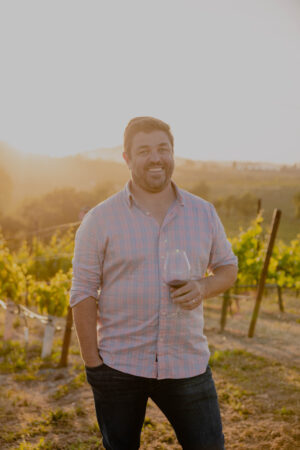
Manspeaker, who turns out to be a devotee of this clone, sources Martini fruit from several vineyard sites including Starscape (formerly Floodgate, one of the oldest vineyards in the Russian River Valley, and, in Humboldt County, from Alderpoint, Elk Prairie and Phelps.
Elk Prairie is own-rooted and, of the three, the most racy and distinctive. While all showed bright apple and red cherry, wine from Elk Prairie was a marvel of spiced crabapple, Alpine strawberry, rhubarb and a mouthwatering core of tangerine, with a finish of cinnamon. It’s where Manspeaker first discovered and fell in love with this clone in 2008. “We tend to see longer hangtime with this particular clone,” he says.
“The resulting wines I’ve made from Martini clones are always bright with fresh red cherries, orange rind and minerality. I love minerality in Pinot Noir and that’s why I gravitate to this clone.”
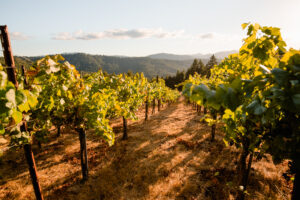
Manspeaker also calls out the Asian spice, depth and elegance of the Phelps, and the concentration and elegance from the 50-year-old Starscape vines. Although much of that vineyard has been replanted to Dijons (same old story), that low-yielding block of Martini remains. But ultimately, it’s Elk Prairie that defines the fresh red-fruited vibrancy he associates with the Martini clone. “I consider the Martini clone in Elk Prairie as my base for what the Martini clone should taste like. This wine tends to ride that line of beauty and the beast.”
As with all great wines, I encourage you to take a journey of discovery and sample these oddballs. I think you’ll be pleasantly surprised. Cheers!
______________________________________________________________________
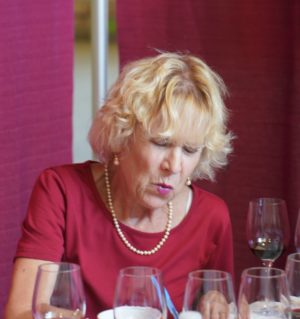
Laura Ness
Laura Ness is an avid wine journalist, storyteller and wine columnist (Edible:Monterey, Los Gatos Magazine San Jose Mercury News, The Livermore Independent), and a long time contributor to Wine Industry Network. Known as “HerVineNess,” she judges wine competitions throughout California and has a corkscrew in every purse. However, she wishes that all wineries would adopt screwcaps!















It’s my belief the Floodgate Vineyard is at the extreme north end of the Anderson Valley (Mendocino County) in what locals call “the deep end” due to its cooler micro-climate there. Brad Wiley of Wiley Vineyard was the first to plant Pinot there in the 1960’s and I believe he has Martini also.
great research and thanks for writing
You should check out Schoolhouse in Napa and see where Gatner got his from, I believe they got DRC cuttings as well?